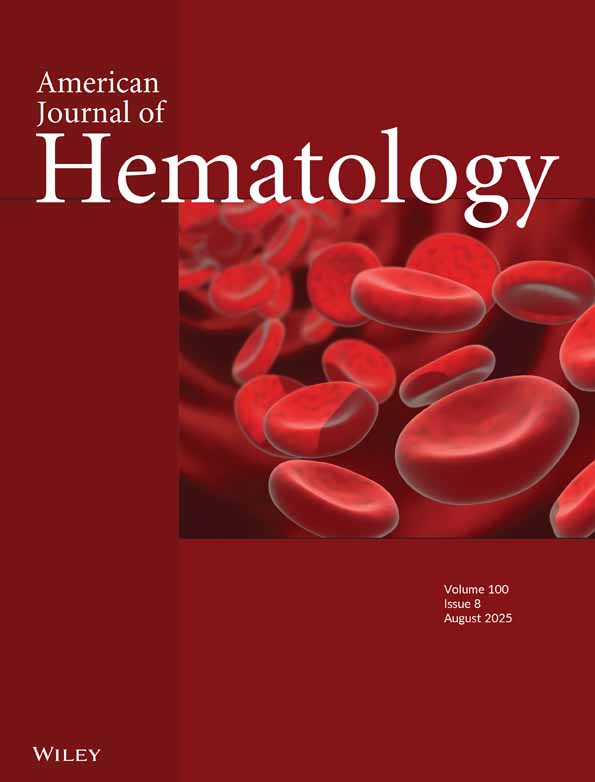Drug-induced hemolysis: Cefotetan-dependent hemolytic anemia mimicking an acute intravascular immune transfusion reaction†
This article is a US Government work and, as such, is in the public domain in the United States of America.
Abstract
Numerous cases of drug-induced hemolytic anemia have been described in patients treated with penicillin or cephalosporin. Second and third generation cephalosporins are more commonly implicated in hemolytic reactions than first generation cephalosporins. We report a case of severe cefotetan-induced hemolytic anemia in a previously healthy 46-year-old woman undergoing an elective hysterectomy. The patient received 2 g of intravenous cefotetan intraoperatively and subsequently at 12 and 24 h post-operatively. She complained of diarrhea and fever on the third post-operative day and was seen in her gynecologist's office on the fifth post-operative day (hemoglobin = 10.5 g/dL). On the seventh post-operative day, she complained of fever and soreness around the suprapubic catheter site and was given a prescription for 500 mg oral cephalexin four times a day. The next day she was seen in the gynecologist's office and reported feeling better. Ten days after the operation her fatigue worsened and her hemoglobin was 4.8 g/dL. She was transfused with 3 units of packed red blood cells (PRBC) and was given 1 g of cefotetan intravenously. During the transfusion of the second unit of PRBC nursing staff observed gross hemoglobinuria and she subsequently developed acute renal failure. Laboratory chemistry parameters were consistent with severe acute hemolysis. The patient's direct antiglobulin test was reactive and her serum reacted with cefotetan-coated red blood cells (RBCs) and serum plus soluble cefotetan reacted with untreated RBCs. The titration endpoint of the serum against cefotetan-coated RBCs was 40,960, while the serum plus soluble cefotetan against uncoated RBCs was 2,560. This case of severe cefotetan-induced hemolysis was complicated by an acute hemolytic event that occurred during the transfusion of PRBC. Clinical and transfusion service staff must consider drug-induced hemolysis in the differential diagnosis of acute anemia. Am. J. Hematol. 64:67–70, 2000. Published 2000 Wiley-Liss, Inc.




